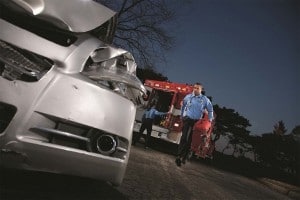Preliminary numbers indicate the U.S. highway death toll tumbled by about 2% last year, a welcome development considering that roadway fatalities surged sharply as the U.S. economy began to recover from the Great Recession.
This would mark the second consecutive annual decline, according to the National Safety Council, if the initial estimate holds when federal regulators release final data, Why the numbers have started to fall again after a worrying rise could take some time to understand, the NSC said in a statement.
All told, about 38,800 Americans were killed on the nations roadways in 2019, said Lorraine M. Martin, a figure she stressed “is still unacceptable.” As a nation, added the president and CEO of the NSC, “we still need to demonstrate better commitment to saving lives. Roadway deaths can be prevented by doubling down on what works, embracing technology advancements and creating a culture of safer driving.”
(Insurance Institute names safest cars on the road.)
In a statement, the NSC pointed to a variety of possible factors that could have led to last year’s reduction in highway fatalities, notably including legislation targeting “common crash causes,” such as drunk and drugged driving, distracted driving and excessive speeds.

More than 40,000 Americans died on the highway in 2017. That figure dropped to about 38,000 in 2019.
But experts are still just beginning to pour over data to try to get a better handle on what is happening on the highway. Indeed, it is far from clear why highway deaths rose by nearly 20% from 2010, when the economy bottomed out, through 2018, when the total rose to 40,231.
A variety of factors took blame, including the fact that, as more Americans found work they spent more time traveling longer distances. Distracted driving is clearly a problem, according to the National Highway Traffic Safety Administration, accounting for as much as 10% or so of fatalities. Drunk driving remains a problem and, while there is conflicting evidence, there are concerns that the expansion of legalized marijuana may also be a factor.
The NSC also noted that drowsy driving may be a factor in as much as 2% of U.S. highway fatalities.
(U.S. Traffic Deaths Drop 2.4% in 2018.)
The estimated 2% decline in 2019 motor vehicle deaths follows a 4% drop in 2017. The numbers have also come down in terms of the number of fatalities per 100 million miles traveled, a factor closely watched by safety experts as it takes into account any increases in the amount American motorists drive.
Though the numbers are improving, on the whole, there were some setbacks. Initial indications are that pedestrian deaths continue to rise, as they have for much of the past decade. Distracted driving is considered one possible factor here.
The NSC noted that at a state level, six states saw overall motor vehicle fatalities decline by at least 13%, including Alaska, Connecticut, Nevada, New Hampshire, South Dakota and Vermont, as well as the District of Columbia. But fatalities rose at least 5% in Delaware, Maine, Nebraska, Ohio, Tennessee and Wyoming.
The NSC issued a series of recommendations aimed at further reducing highway fatalities. For motorists, that included a recommendation that they buckle up and recognize the dangers of distracted and impaired driving.
(Exterior Airbags Could Save Lives of Passengers and Pedestrians.)
The non-profit safety group also pointed to Utah’s move to reduce the allowable blood-alcohol level from .08% to .05%, an approach other states are now considering.


“But experts are still just beginning to pour over data” – not sure what they are pouring but better proofreading would probably help!
kee-rekt…